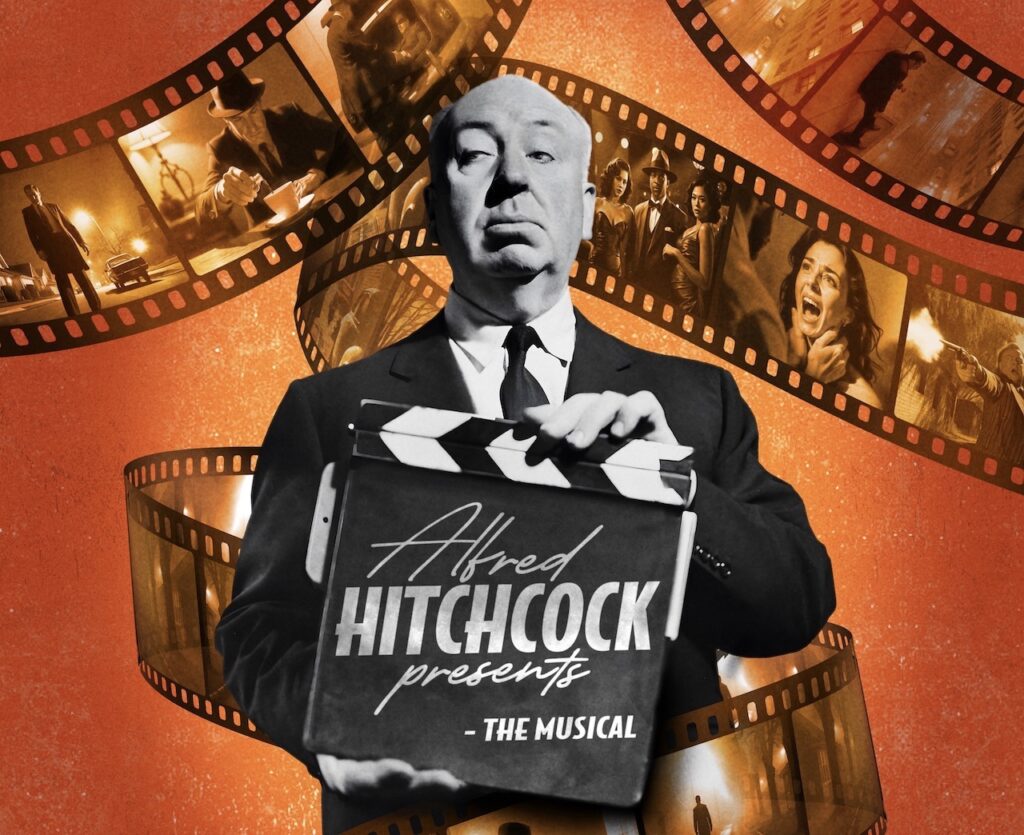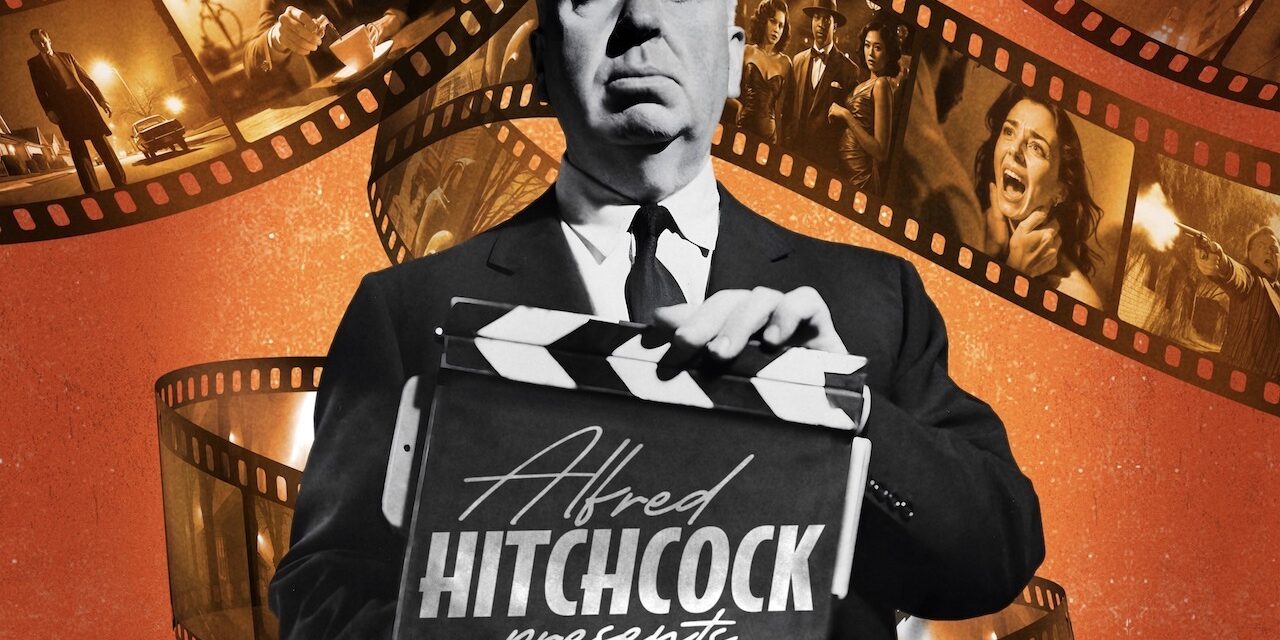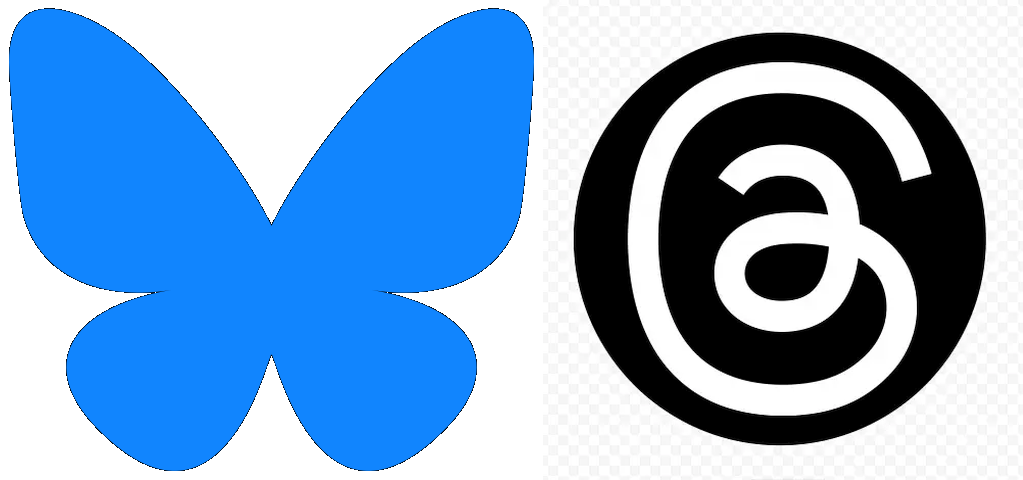
“Mr. Hitchcock, Mr. Lutvak and Me”
268 episodes of television to choose from. 361 if you included the 93 hour-long installments that comprised The Alfred Hitchcock Hour. We chose not to. 268 was daunting enough.
When Lutvak first proposed that I collaborate with him on Alfred Hitchcock Presents, the Musical, he already knew me to be a keen admirer of Mr. Hitchcock’s films. (Lutvak being the composer/lyricist Steven Lutvak. I’ve called him Lutvak for nearly 30 years. ‘Steven’ was reserved for those times we were angry with one another — unavoidable when you write a show together.)
Lutvak assumed I was familiar with the television series. And I was — to a point. Aside from the occasional re-watch of “Lamb to the Slaughter,” (which did make the cut for our musical), or “Bang! You’re Dead,” (which did not), it had been decades since I’d seen any of the other episodes.
My introduction to Mr. Hitchcock came not through his television work, but through his films. Thanks to our proximity to Manhattan, we had access to seven broadcast channels. Seven! Such were the glories of growing up on Long Island during the 1970’s. I devoured whatever aired. That meant a lot of reruns.
Lutvak called people our age the Black & White Generation. Color television had long been the norm, but reruns of black & white films and TV shows were not anathema. In school hallways and cafeterias, shows like I Love Lucy were discussed in the same breath as Happy Days and Three’s Company. The Twilight Zone, The Honeymooners, and, yes, Alfred Hitchcock Presents were other stalwarts of this pre-cable television era.
I came to the series after I fell in love with the films. My first Hitchcock was The Birds. I encountered it one lonely Saturday afternoon at the age of eleven. The next morning, I left my house to deliver newspapers. Six minutes later, I raced home, convinced a flock of birds was chasing me. Alfred Hitchcock had officially gotten under my skin.
It would be reductive to say Mr. Hitchcock directed thrillers, and wildly inaccurate to say he directed horror movies. He directed tales of the human heart. He forced audiences to confront the twisted, hidden corners of themselves they refused acknowledge — all under the guise of being mere entertainments. Critics and audiences at the time focused on the suspense, the thrills, the movie stars. The great reappraisal came later.
Alfred Hitchcock Presents debuted in the United States on Sunday October 2, 1955. It aired for seven seasons — ten if you include The Alfred Hitchcock Hour. Again, I prefer not to; the half-hours felt tighter, more purposeful. What Mr. Hitchcock and his team managed to convey in 30 minutes was often breathtaking.
And each week, he’d greet viewers with his now-iconic “Good evening,” before introducing that night’s tale of mystery and intrigue. Mr. Hitchcock’s incredibly droll, often quite warped musings quickly became a defining feature of the show, cementing the Hitchcock persona in the public’s imagination. The sly trickster. The mischievous teller of tales. America’s fun uncle. He became wildly famous.
Each week, he invited you into his world. These were not mere episodes of television. These were extensions of the man himself, the Master of Suspense; and here he was, inside our very own living rooms.
Mr. Hitchcock and his chief collaborators in the endeavor, Joan Harrison and Norman Lloyd, assembled a rogue’s gallery of the famous (Bette Davis, Joseph Cotten), the soon-to-be-famous (Robert Redford, Steve McQueen), and the unsung. Together these artists crafted one of the most influential programs in the history of the medium.
Despite its reach, Alfred Hitchcock Presents is typically looked upon as a sidebar to the work he did in film. Yet in many ways, the best episodes provide a more intimate glimpse at Mr. Hitchcock’s worldview than the films. These 30-minute morality tales frequently engaged in sly conversation with their big screen counterparts, especially the 17 episodes Mr. Hitchcock directed himself. I encourage you to seek out season two’s “One More Mile to Go.” Parts of it feel like an early test reel for Psycho, which Mr. Hitchcock famously shot using his television crew.
Several years into our process, Lutvak had the immense privilege of speaking with Norman Lloyd. He excitedly relayed our plans to turn Alfred Hitchcock Presents into a musical.” Mr. Lloyd’s horrified response: “A musical? I wouldn’t be able to countenance that.”
There were times Lutvak and I weren’t so sure we could either. There was sooo much material. And even after landing on the stories we both connected with and felt we could make more meaningful through song, we still had to figure out how to weave them together in a manner that elevated the material even further: “Wait a minute, wait a minute… these two stop at a traffic light in Story X, and those two drive their car in Story Y. What if the Story Y people get stuck at the same traffic light? That’s a song right there.” “Do they know each other?” “No, they don’t know each other!” “Can they still sing together?” “Of course they can still sing together!” “What do they sing?” “How the hell do I know?!” That, my friends, is what we call musical theater writing in a box.
As I take stock of this strange little musical that Lutvak and I concocted, two things stand out to me: the cleverness of the original stories and the beauty of Lutvak’s score.
Alas, my dear friend Steven Lutvak passed away a year and a half ago. He left behind a loving husband and a lively and curious daughter who both miss him dearly. He also left behind this musical.
It is my sincere hope that wherever they are, the Messrs. Lutvak and Hitchcock have had a chance to get to know each other. I like to imagine the two of them discussing their shared obsessions over a glass of brandy.
It is also my hope that Mr. Lloyd isn’t too disappointed with us.
Written by Jay Dyer, February 6, 2025


